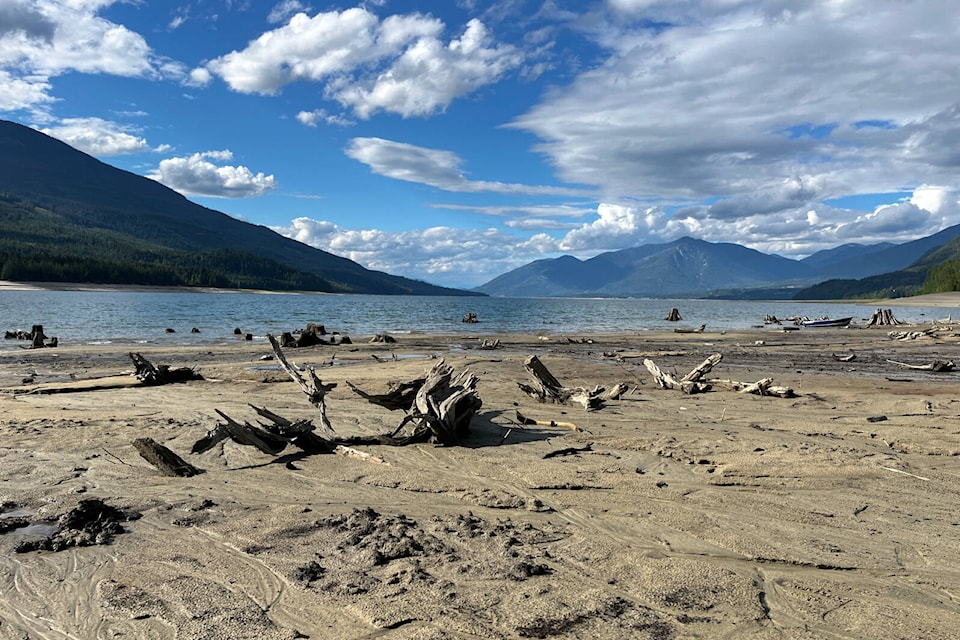With water levels in the Arrow Lakes Reservoir reaching low levels usually only seen in the winter when snow blankets the shoreline, historic structures and materials from the time before the creation of the reservoir are far more noticeable than usual.
In response, BC Hydro is working on an inventory of these materials that include old building foundations, rusted metal and broken glass.
“We have received a lot of reports of remaining structures and materials, which is hazardous to reservoir users and are a difficult reminder of what was lost when the reservoir was created,” said BC Hydro in their fall update.
BC Hydro says that once the inventory has been completed, the structures and materials will be assessed based on environmental considerations, archaeological and heritage values, accessibility, and public safety concerns to determine if they should be removed or altered or if they should remain untouched.
They will then develop a plan to remove as much of the structures and materials as possible. Preliminary assessments have catalogued several new remnant sites and other existing sites have been expanded.
“This will improve safety in the event of future low water events,” said BC Hydro in an Oct. 20 statement.
“We would like to thank everyone who has reached out to us to report these structures and materials. The information that you have provided has been very useful in guiding this process.”
READ MORE: Glass half empty: Rural Kootenay water systems struggle to meet health standards
BC Hydro has also launched the Guardian Watch Program with the purpose of having a presence on the reservoir in order to spread information about the importance of archaeological resources.
Anyone who would like to share further information is encouraged to contact BC Hydro directly at southern-interior.info@bchydro.com.
The reservoir is forecasted to continue to draft throughout the fall and will likely reach a minimum level of 422.15 metres (1,385 feet) by the end of November.
This year’s low levels resulted in significant impacts across the Arrow Lakes region throughout the summer and into the fall.
Amidst reports of stranded fish, BC Hydro deployed crews to assess stranding sites and salvage fish where possible. Over 500 kilometres of shoreline were assessed to identify pools and focus ground surveys and salvage efforts, and 159 pools were sampled at 26 different sites.
BC Hydro reports salvaging 39,000 fish as of Oct. 13. The salvaged fish are mostly small and young and the vast majority are Northern Pikeminnow, Redside Shiner, Carp, Suckers, Dace, and Sculpins. Crews are still continuing to rescue fish where possible in order to reduce the number of mortalities.
READ ALSO: Slow the flow: Arrow Lakes shrinkage points to holes in Columbia River Treaty
